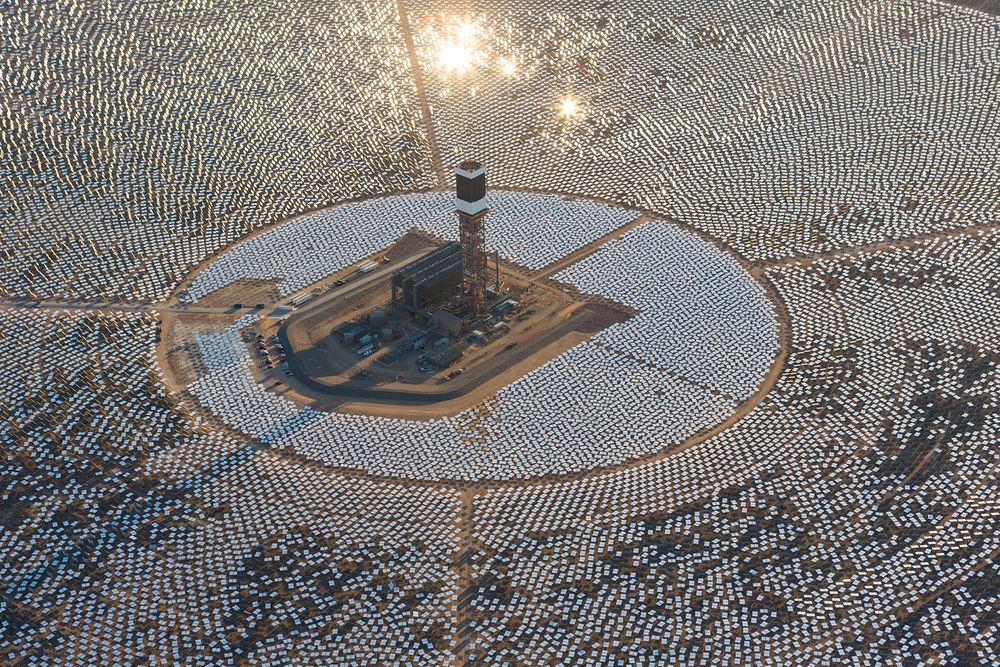After four years of work, what is referred to as the world’s largest solar thermal power plant is in commercial operation.
It recently started providing electricity to California’s citizens. The production capacity of the solar thermal power plant constitute 30 percent of all solar thermal energy now operational in the USA, according to majority owner NRG that owns the giant power plant along with Google and BrightSource Energy.
Since the work started in October 2010, the project has created thousands of work places and hired almost 3000 construction workers, completing more than eight million work hours.


Big Day
“When fully operational, the three towers are capable of producing a total of 392 MW, which is enough electricity to provide 140,000 Californian homes with clean energy and avoid 400,000 tons of CO2 emissions yearly. This is the equivalent of taking 72,000 cars off the roads,” states a press release from the energy company NRG.
The 173,500 solar mirrors, also called heliostats, are computerized and provide the maximum amount of sunrays to hit the 135 meter tall sun tower of the plant. At the top of these collectors, the sunlight heats water and generates steam that in turn drives a turbine, a process that goes by the name Concentrated Solar Power (CSP). The power plant was built at the cost of US$2.2 billion.
“It’s a big day for the sector of the solar power industry that deals with concentrated solar power. We work closely with concentrated solar power through the Sahara Forest Project in Quatar and follow the development within this technology closely,” explained Bellona leader Fredrik Hauge.
Critique
The project has met some resistance on its way to commercialization, mainly from leading American media amongst others. The reason for critique is divided:
- Similar to wind turbines, solar thermal power plants pose a threat to birdlife. In the hot boilers on top of the three towers, temperatures quickly reach many hundred degrees Celsius. According to Green Biz, 150 birds died in December as a consequence of flying into the solar mirrors or from burns provided by the high temperatures in the plant.
- Ivanpah is positioned in a draught exposed area. The owners therefore made a point that Ivanapah would reduce the water demands by 95 percent by equipping it with air cooling. Still a large amount of water is taken from the groundwater reservoirs to clean the solar mirrors.
- In addition, Ivanpah has not installed technology for storing excess heat, something similar plants have. Storage technology based on molten salt is available for solar thermal power plants. This makes it possible to use stored heat at night when the sun is set.
- Even if the contracts Ivanapah signed with different deliverers is confidential, the price of electricity is said to be a lot higher than other plants based on solar energy, including large scale photovoltaic systems.
Hauge states it is not a big problem that the Ivanapah plant can’t store energy.
“A substantial part of energy use happens during the day. California uses air condition extensively and therefore a lot of electricity is spent during the day. CSP is a technology that can be in continual operation through molten salt or biogas turbines in the future, but Ivanapah can now run the plant commercially, and this provides a learning curve and development that is very important to future plants,” explained Hauge.
Cooling challenge
In the pilot project, Sahara Forest Project, the use of concentrated solar power is used to produce electricity in a project that aims to create water, power, food and fuel in the desert by using a system of existing technologies.
Here the waste from one technology becomes the recourse of another. The facility in Qatar was completed in 2012.
“Concentrated solar power face two main challenges. One is how to store the energy. So called molten salt is one solution, but this type of facility also includes turbines that can be run by biogas in the future. We imagine taking the CO2 the turbine creates to use this in algae production. Another challenge is the cooling of the facilities. The need for cooling the towers reduces the energy outcome, that is why we are very interested in how this can be solved,” said Hauge.



